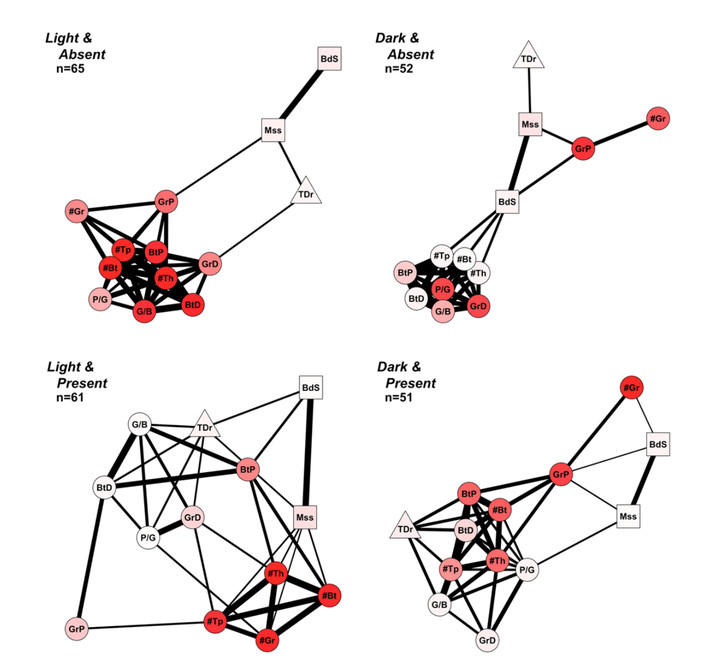Dynamic changes in display architecture and function across environments revealed by a systems approach to animal communication*

Abstract
Animal communication is often structurally complex and dynamic, with signaler and receiver behavior varying in response to multiple environmental factors. To date, studies assessing signal dynamics have mostly focused on the relationships between select signaling traits and receiver responses in a single environment. We use the wolf spider Schizocosa floridana to explore the relationships between courtship display form and function across two social contexts (female presence vs absence) and two light environments (light vs dark). We use traditional analytical methods to determine predictors of copulation success (i.e., signal function) and examine these predictors in a structural context by overlaying them on signal phenotype networks (Wilkins et al. 2015). This allows us to explore system design principles (degeneracy, redundancy, pluripotentiality), providing insight into hypotheses regarding complex signal evolution. We found that both social context and light environment affect courtship structure, although the predictors of mating success remain similar across light environments, suggesting system degeneracy. Contrastingly, the same display traits may serve different functions across social environments, suggesting pluripotentiality. Ultimately, our network approach uncovers a complexity in display structure and function that is missed by functional analyses alone, highlighting the importance of systems-based methodologies for understanding the dynamic nature of complex signals.